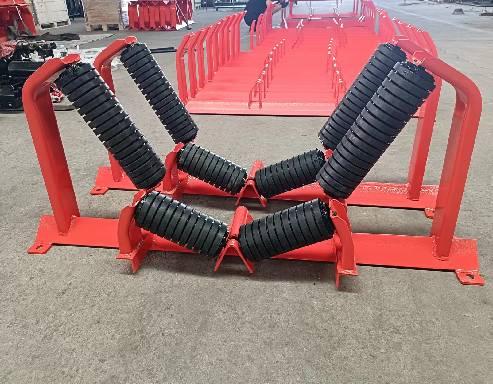 Afrikaans
Afrikaans  Albanian
Albanian  Amharic
Amharic  Arabic
Arabic  Armenian
Armenian  Azerbaijani
Azerbaijani  Basque
Basque  Belarusian
Belarusian  Bengali
Bengali  Bosnian
Bosnian  Bulgarian
Bulgarian  Catalan
Catalan  Cebuano
Cebuano  Corsican
Corsican  Croatian
Croatian  Czech
Czech  Danish
Danish  Dutch
Dutch  English
English  Esperanto
Esperanto  Estonian
Estonian  Finnish
Finnish  French
French  Frisian
Frisian  Galician
Galician  Georgian
Georgian  German
German  Greek
Greek  Gujarati
Gujarati  Haitian Creole
Haitian Creole  hausa
hausa  hawaiian
hawaiian  Hebrew
Hebrew  Hindi
Hindi  Miao
Miao  Hungarian
Hungarian  Icelandic
Icelandic  igbo
igbo  Indonesian
Indonesian  irish
irish  Italian
Italian  Japanese
Japanese  Javanese
Javanese  Kannada
Kannada  kazakh
kazakh  Khmer
Khmer  Rwandese
Rwandese  Korean
Korean  Kurdish
Kurdish  Kyrgyz
Kyrgyz  Lao
Lao  Latin
Latin  Latvian
Latvian  Lithuanian
Lithuanian  Luxembourgish
Luxembourgish  Macedonian
Macedonian  Malgashi
Malgashi  Malay
Malay  Malayalam
Malayalam  Maltese
Maltese  Maori
Maori  Marathi
Marathi  Mongolian
Mongolian  Myanmar
Myanmar  Nepali
Nepali  Norwegian
Norwegian  Norwegian
Norwegian  Occitan
Occitan  Pashto
Pashto  Persian
Persian  Polish
Polish  Portuguese
Portuguese  Punjabi
Punjabi  Romanian
Romanian  Russian
Russian  Samoan
Samoan  Scottish Gaelic
Scottish Gaelic  Serbian
Serbian  Sesotho
Sesotho  Shona
Shona  Sindhi
Sindhi  Sinhala
Sinhala  Slovak
Slovak  Slovenian
Slovenian  Somali
Somali  Spanish
Spanish  Sundanese
Sundanese  Swahili
Swahili  Swedish
Swedish  Tagalog
Tagalog  Tajik
Tajik  Tamil
Tamil  Tatar
Tatar  Telugu
Telugu  Thai
Thai  Turkish
Turkish  Turkmen
Turkmen  Ukrainian
Ukrainian  Urdu
Urdu  Uighur
Uighur  Uzbek
Uzbek  Vietnamese
Vietnamese  Welsh
Welsh  Bantu
Bantu  Yiddish
Yiddish  Yoruba
Yoruba  Zulu
Zulu conveyor training idlers
Understanding Conveyor Training Idlers A Key Component in Material Handling Systems
In the realm of material handling, conveyor systems play an indispensable role in industries ranging from manufacturing to logistics. Among the various components that make up these systems, conveyor training idlers are critical for ensuring the efficient operation of conveyors. In this article, we will delve into the importance of conveyor training idlers, their functions, types, and maintenance practices, highlighting their significance in enhancing conveyor performance.
What Are Conveyor Training Idlers?
Conveyor training idlers are specialized rollers that guide the belting of a conveyor to ensure proper alignment and prevent it from drifting off track. These idlers are strategically positioned along the conveyor system, especially at critical points where the direction of the belt changes. By maintaining the alignment of the conveyor belt, training idlers minimize wear and tear on the system, prolonging its lifespan and reducing maintenance costs.
Functions of Conveyor Training Idlers
The primary function of conveyor training idlers is to maintain proper belt alignment. When a conveyor belt is misaligned, it can cause a variety of issues, including uneven wear on the belt and the idlers themselves, product spillage, and increased energy consumption. Training idlers help mitigate these problems by ensuring that the belt remains centered on the idler rollers.
Moreover, training idlers can assist in controlling belt tension. Properly tensioned belts operate more efficiently, reducing the risk of slippage and ensuring optimal power transfer. Some idler designs also incorporate mechanisms to adjust the angle or position, providing additional support for maintaining appropriate belt tension.
Types of Conveyor Training Idlers
Training idlers come in various types, each designed for specific applications and requirements. The most common types include
conveyor training idlers

1. V-Return Idlers These have a V-shaped design that helps guide the belt back to a central position. They are ideal for systems where the belt tends to drift outward.
2. Self-Centering Idlers These idlers are equipped with features that allow them to automatically adjust to the belt's position, ensuring it remains centered even in the case of slight misalignments.
3. Flanged Idlers Featuring raised edges, flanged idlers prevent the belt from slipping off the sides. They are particularly useful in applications with a heavier load or where lateral forces are prevalent.
4. Crowned Idlers The crown shape of these idlers helps keep the belt aligned by providing a natural guiding effect. They are effective in reducing belt wander, especially in long conveyor spans.
Maintenance of Conveyor Training Idlers
Proper maintenance of conveyor training idlers is crucial to ensure their long-term performance. Regular inspections should be conducted to check for wear and tear, misalignment, or damage. Any issues should be addressed promptly to prevent them from escalating and affecting the overall conveyor system.
Lubrication is another essential aspect of maintaining training idlers. Ensuring that the rollers are well-lubricated reduces friction, allowing them to rotate freely and minimizing wear. Moreover, cleaning the idlers and surrounding areas helps remove debris and buildup that could lead to misalignment.
Conclusion
In conclusion, conveyor training idlers are vital components that play a significant role in the efficient operation of conveyor systems. By ensuring proper belt alignment and tension, these idlers help minimize wear and tear, reduce energy consumption, and enhance overall system performance. By understanding their importance, types, and maintenance practices, industries can optimize their material handling processes, leading to increased productivity and reduced operational costs. As industries continue to evolve and demand for efficiency rises, the role of conveyor training idlers will only become more pronounced in the future of material handling.
-
Revolutionizing Conveyor Reliability with Advanced Rubber Lagging PulleysNewsJul.22,2025
-
Powering Precision and Durability with Expert Manufacturers of Conveyor ComponentsNewsJul.22,2025
-
Optimizing Conveyor Systems with Advanced Conveyor AccessoriesNewsJul.22,2025
-
Maximize Conveyor Efficiency with Quality Conveyor Idler PulleysNewsJul.22,2025
-
Future-Proof Your Conveyor System with High-Performance Polyurethane RollerNewsJul.22,2025
-
Driving Efficiency Forward with Quality Idlers and RollersNewsJul.22,2025





























